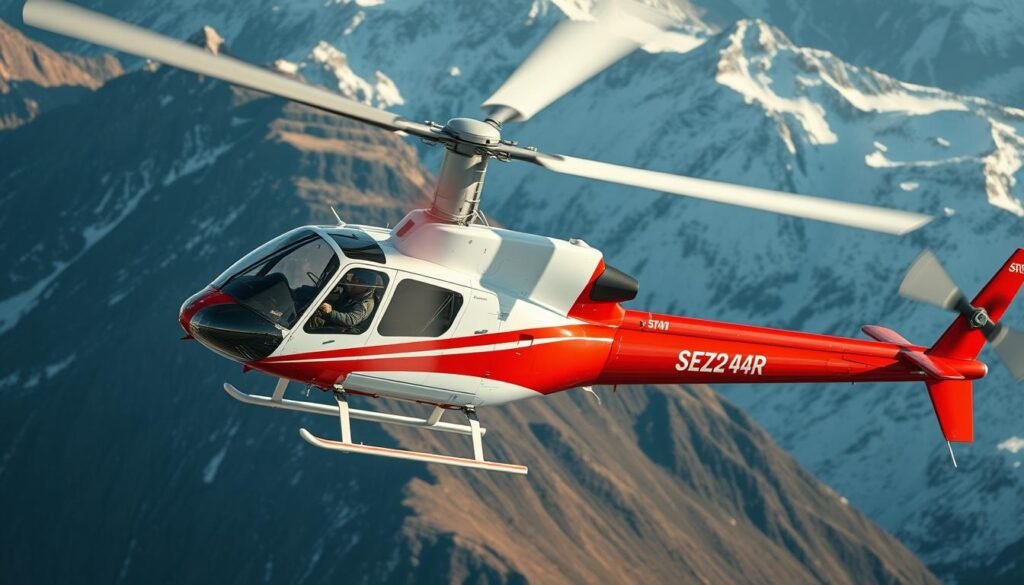While many people associate helicopter pilots with passenger transport, such as tourism or VIP travel, there are numerous industries where helicopter pilots play essential roles. These industries often offer unique opportunities, specialized missions, and attractive salaries for pilots with the right skills and certifications. In this article, we’ll explore some of the best industries for helicopter pilots beyond traditional passenger transport.
1. Emergency Medical Services (EMS)
One of the most critical and rewarding fields for helicopter pilots is Emergency Medical Services (EMS). EMS pilots are responsible for flying air ambulances, transporting critically injured or ill patients from accident scenes or remote areas to hospitals. This role often requires quick thinking, precision flying, and the ability to remain calm under pressure.
Key Responsibilities:
- Medical Evacuations: Transporting patients in emergency situations.
- Coordination with Medical Teams: Working closely with paramedics, nurses, and doctors onboard the helicopter.
- Night and Adverse Weather Flying: Pilots must often fly in challenging conditions, including at night and in bad weather.
Why It’s a Great Career:
- High Demand: EMS pilots are always in demand, particularly in remote or underserved areas.
- Impactful Work: You’ll be making a direct difference in saving lives.
- Competitive Salaries: EMS pilots can earn between $60,000 and $90,000 per year, depending on location and experience.
2. Search and Rescue (SAR)
Search and Rescue (SAR) missions involve using helicopters to locate and rescue individuals in distress, often in remote or hard-to-reach areas. SAR pilots work with government agencies, military organizations, or private companies to conduct rescue missions during natural disasters, accidents, or emergencies in challenging environments.
Key Responsibilities:
- Rescue Operations: Evacuating stranded or injured individuals from dangerous situations.
- Disaster Relief: Assisting in disaster zones during floods, earthquakes, or other emergencies.
- Precision Flying: Hovering in confined spaces or over rough terrain to carry out rescue missions.
Why It’s a Great Career:
- Adrenaline-Packed: SAR pilots often face challenging and high-stakes situations that provide a sense of adventure and fulfillment.
- Public Service: Working in SAR allows pilots to contribute to public safety and disaster relief.
- High Skill Level: This field requires expert flying skills, and experienced SAR pilots are highly valued.
3. Offshore Oil and Gas
The offshore oil and gas industry relies heavily on helicopter pilots to transport personnel, supplies, and equipment to and from offshore platforms. This industry operates in remote areas, often miles away from the nearest coastline, making helicopter transportation critical to its operations.
Key Responsibilities:
- Personnel Transport: Ferrying workers to offshore oil rigs and back to shore.
- Supply Runs: Delivering equipment and supplies to rigs.
- Weather Adaptability: Flying in sometimes harsh weather conditions, including over open water.
Why It’s a Great Career:
- High Pay: Offshore helicopter pilots often earn between $70,000 and $130,000 per year, with experienced pilots at the upper end.
- Job Stability: The oil and gas industry is a major global player, offering stable employment opportunities.
- International Travel: Many offshore jobs offer international travel opportunities, with assignments around the world.
4. Utility and Construction
Helicopters are essential for utility work such as power line inspections, pipeline patrols, and construction projects in hard-to-reach locations. Pilots in this field may fly to inspect infrastructure, install power lines, or transport materials to remote construction sites.
Key Responsibilities:
- Aerial Inspections: Inspecting pipelines, power lines, or other infrastructure from the air.
- Material Transport: Carrying supplies or construction materials to sites that are inaccessible by road.
- Precision Flying: Conducting operations that require hovering or moving slowly in confined spaces.
Why It’s a Great Career:
- Variety of Work: Utility pilots often face a wide range of flying conditions and environments, from mountains to cities.
- In-Demand: As infrastructure expands, especially in remote areas, the demand for helicopter pilots in utility work continues to grow.
- Unique Challenges: The technical skills required for these jobs are high, making this field ideal for pilots who enjoy challenging flying conditions.
5. Law Enforcement and Border Patrol
Helicopters are widely used by law enforcement agencies and border patrols for surveillance, pursuit, and monitoring. Helicopter pilots in this industry assist with missions such as tracking criminals, monitoring traffic, and conducting aerial surveillance along national borders.
Key Responsibilities:
- Surveillance: Monitoring criminal activity, conducting searches for missing persons, or assisting in high-speed pursuits.
- Border Patrol: Monitoring and patrolling international borders to prevent illegal activity.
- Coordination with Ground Teams: Communicating with law enforcement on the ground to provide support during operations.
Why It’s a Great Career:
- Government Job Stability: Many law enforcement pilots are employed by local or federal government agencies, offering job security.
- Community Impact: This role allows pilots to contribute to public safety and national security.
- Exciting Missions: Pilots in law enforcement often experience high-intensity situations, making the job exciting and dynamic.
6. Firefighting and Aerial Fire Suppression
Aerial firefighting is a critical industry for helicopter pilots, particularly in areas prone to wildfires. Helicopter pilots in this industry are responsible for dropping water or fire retardants over burning areas, often working in extreme conditions to help contain fires and protect communities.
Key Responsibilities:
- Water Drops: Using buckets or onboard systems to drop water or retardants on wildfires.
- Transporting Fire Crews: Delivering firefighting teams and equipment to remote locations.
- Flying in Hazardous Conditions: Pilots must navigate through smoke, turbulence, and high winds during fire suppression missions.
Why It’s a Great Career:
- Rewarding Work: Aerial firefighting pilots play a direct role in protecting lives, homes, and forests from destruction.
- High Demand: Wildfires are increasingly common in certain parts of the world, making aerial firefighting an in-demand field.
- Adrenaline-Fueled: The high-risk, fast-paced nature of firefighting offers excitement for pilots who enjoy challenging conditions.
7. Aerial Photography and Filmmaking
The film and media industry relies on helicopters for aerial photography and cinematography, particularly in action movies, documentaries, and nature films. Pilots in this field need to have strong precision-flying skills and often work closely with production teams to capture the perfect shot.
Key Responsibilities:
- Aerial Filming: Flying for movie sets, TV shows, or documentaries to capture aerial footage.
- Scenic Shots: Filming landscapes, cityscapes, and other natural features for various media projects.
- Coordination with Production Crews: Working with directors and camera operators to execute specific shots and scenes.
Why It’s a Great Career:
- Creative Work: Aerial filming is a great choice for pilots who enjoy creative projects and working with artistic teams.
- Unique Flying Challenges: This field requires precision flying to capture dynamic and complex shots, adding excitement to the job.
- Potential for Freelance Work: Many aerial photography pilots work as freelancers, offering flexibility and variety in their assignments.
Conclusion
Helicopter pilots have access to a wide range of job opportunities beyond traditional passenger transport. Whether it’s saving lives in EMS, fighting fires, or working offshore, the demand for helicopter pilots is high across many industries. These fields offer unique challenges, exciting missions, and competitive salaries, making helicopter aviation a diverse and rewarding career path. By gaining the necessary skills and certifications, pilots can unlock numerous opportunities in these specialized industries.
Related Articles
- Women in Helicopter Aviation: Breaking Barriers and Building a Career
- Freelance Helicopter Pilots: How to Build a Successful Career
- Helicopter Pilot Licensing Requirements: A Global Overview
- How to Network and Advance Your Career as a Helicopter Pilot
- What to Expect in Your First Year as a Commercial Helicopter Pilot
More from This Category
- Work-Life Balance for Helicopter Pilots: Managing a Demanding Career
- How to Transition from Fixed-Wing to Helicopter Flying: Tips for Pilots
- The Best Industries for Helicopter Pilots: Job Opportunities Beyond Passenger Transport
- Medical Requirements for Helicopter Pilots: What You Need to Know
- How to Build Flight Hours as a New Helicopter Pilot
- Essential Skills Every Helicopter Pilot Needs to Succeed
- Top Helicopter Pilot Training Schools: How to Choose the Best Program
- Private vs. Commercial Helicopter Pilot: Which Career Path Is Right for You?
- Helicopter Pilot Salary: What You Can Expect at Every Stage of Your Career
- How to Become a Helicopter Pilot: A Step-by-Step Guide



